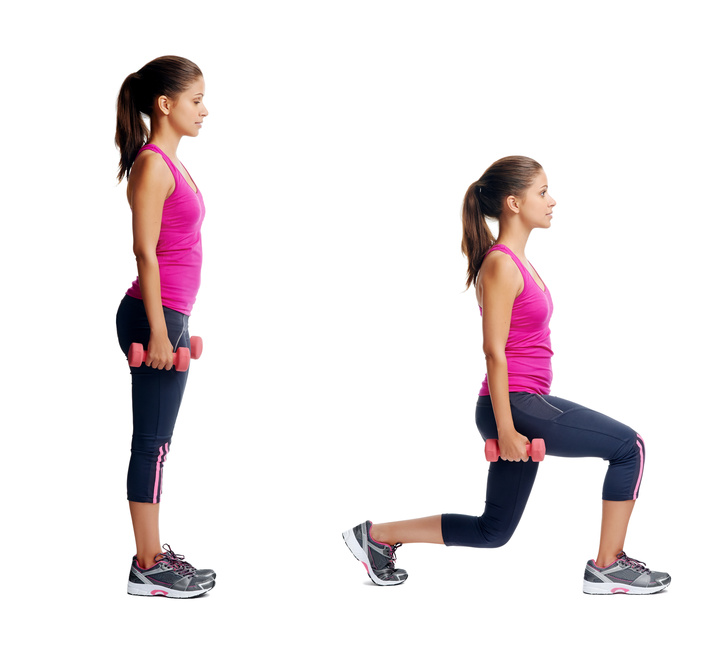According to Wikipedia, a traditional lunge “can refer to any position of the human body where one leg is positioned forward with knee bent and foot flat on the ground while the other leg is positioned behind.
It is used by athletes in cross-training for sports, by weight-trainers as a fitness exercise, and by yogis as part of an asana regimen.
Lunges are a good exercise for strengthening, sculpting and building several muscles/muscle groups, including the quadriceps (or thighs), the gluteus maximus (or buttocks) as well as the hamstrings.”
Instructions for “good-form” lunges
Stand tall with your feet hip-width apart. Brace your core, pull your shoulders back and keep your back naturally arched. Hands can either be placed on your hips, or kept at your side.
Step or lunge forward with your left leg, and slowly lower your body until your left knee is bent to approximately 90 degrees. Your right knee should almost make contact with the ground, and your torso kept upright for the complete movement.
Hold in position for 1 to 3 seconds, then push yourself back into the starting position in one swift, fluid action. Complete the prescribed number of repetitions.
The above instructions are for left-leg lunges. The same principles apply for right-leg lunges, but naturally you’ll step forward with your right leg instead.

To perform alternate-leg lunges, step forward with your left leg, then push back with your right foot into the starting position. Now, perform the same move, but this time step forward with your right foot. Repeat as many times as required.
Remember to breathe when performing lunges. Holding your breath during exercise will reduce its effectiveness, and only make the workout more difficult. Exhale as you lunge forward, then inhale when you push back into starting position.
A few more tips: make sure that your forward knee never travels past the tips of your toes. Keep your spine straight through the entire movement, with your shoulders positioned squarely over your hips. Finally, keeping your eyes focused forward will help maintain balance throughout the exercise. Good luck!
[Wow-Modal-Windows id=1]